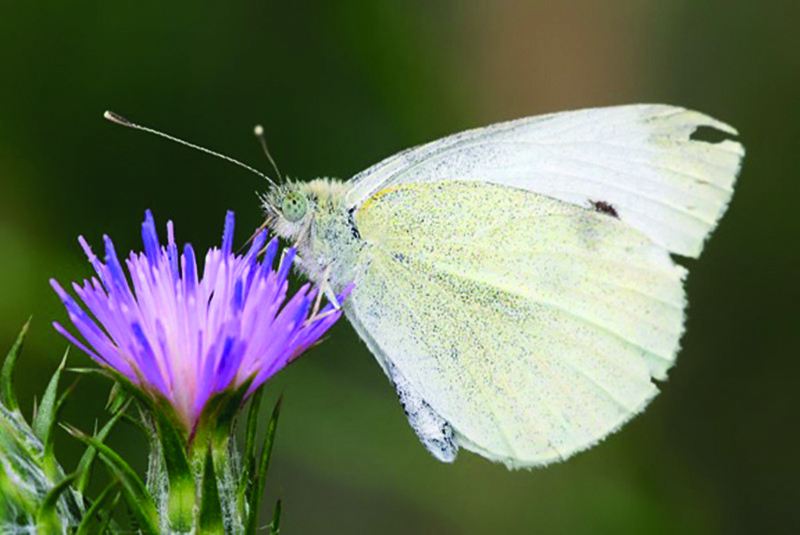A few weeks ago there were a few small white butterflies fluttering in our garden and then some blue ones…never to be seen again…Their brief presence created a buzz in our household and made me think how rare an event it has become to have butterflies visiting our gardens. I decided there and then to put a plan together to invite them back.
Butterflies like nectar rich and scented plants, they love wildflowers and long grass where they can lay their eggs.
Encouraging wildflowers in your garden is actually rather difficult as people who have tried to grow them from a seed packet will know. Wildflowers thrive on poor soil and our clay soil is many things but poor is not one of them. It’s full of nutrients which means grass and weeds will outcompete and smother the more delicate wildflowers. These last couple of years I have started to use wildflower turf in a lot of my garden and public landscape projects. See a strip of wildflowers along Brenchley Gardens Housing Estate that was laid out in January and has been flowering since May, looking like it’s always been there. It will come back every year as long as it’s been cut down once a year, cuttings are removed and NO organic matter is ever added. Wildflower turf is now widely available to purchase online, even in small quantities and can be used in a lot of different ways: In strips or if you have the space, in large patches. It also looks very attractive used as a lawn or path edge.
If you can’t afford to buy the wildflower turf, just leaving patches of longer grass will increase your butterfly count many times.
Sorrel, buckthorn (the brimstone female can smell a buckthorn plant five miles away; plant one and you should get brimstones in your garden), holly, ivy, dogwoods and escallonia are also good breeding habitats for the holly blue and other butterflies.
Sweet rocket (Hesperis matronalis) is another must have for butterflies that we can all happily introduce to our gardens.
Buddleias of course are famous for attracting butterflies hence their common name “butterfly-bush” but beware. They are incredibly invasive and in some areas have become a threat to the local biodiversity, smothering all native species.
Butterfly Conservation recommends planting buddleia for its summer nectar but admits the plant has to be treated with caution.
The charity says the plant can cause serious problems on conservation sites. It advises against planting buddleia where it may be unmanaged and recommends gardeners remove seed heads.
Then there’s the classic veg garden enemy – the large white butterfly– which is in now in major decline. Veg gardeners tend to hate it and give it a regular dose of pesticide but habits must be changed or they will disappear altogether.
So why not trying to sow lots of nasturtiums as a sacrificial crop. The large whites particularly go for the tall climbing nasturtiums such as the Alaska Series. If you find a caterpillar on your cabbages, don’t squash it – move it to the nasturtiums and allow it to happily feast away.
So lovely people of South London, let’s all cram our gardens with more nectar-rich flowering plants and welcome back the butterflies in our gardens and in our lives.
Barbara Samitier is a garden designer who lives in Peckham Rye.
www.barbarasamitiergardens.co.uk
This feature first appeared in the July 2015 issue of SE22 magazine.


